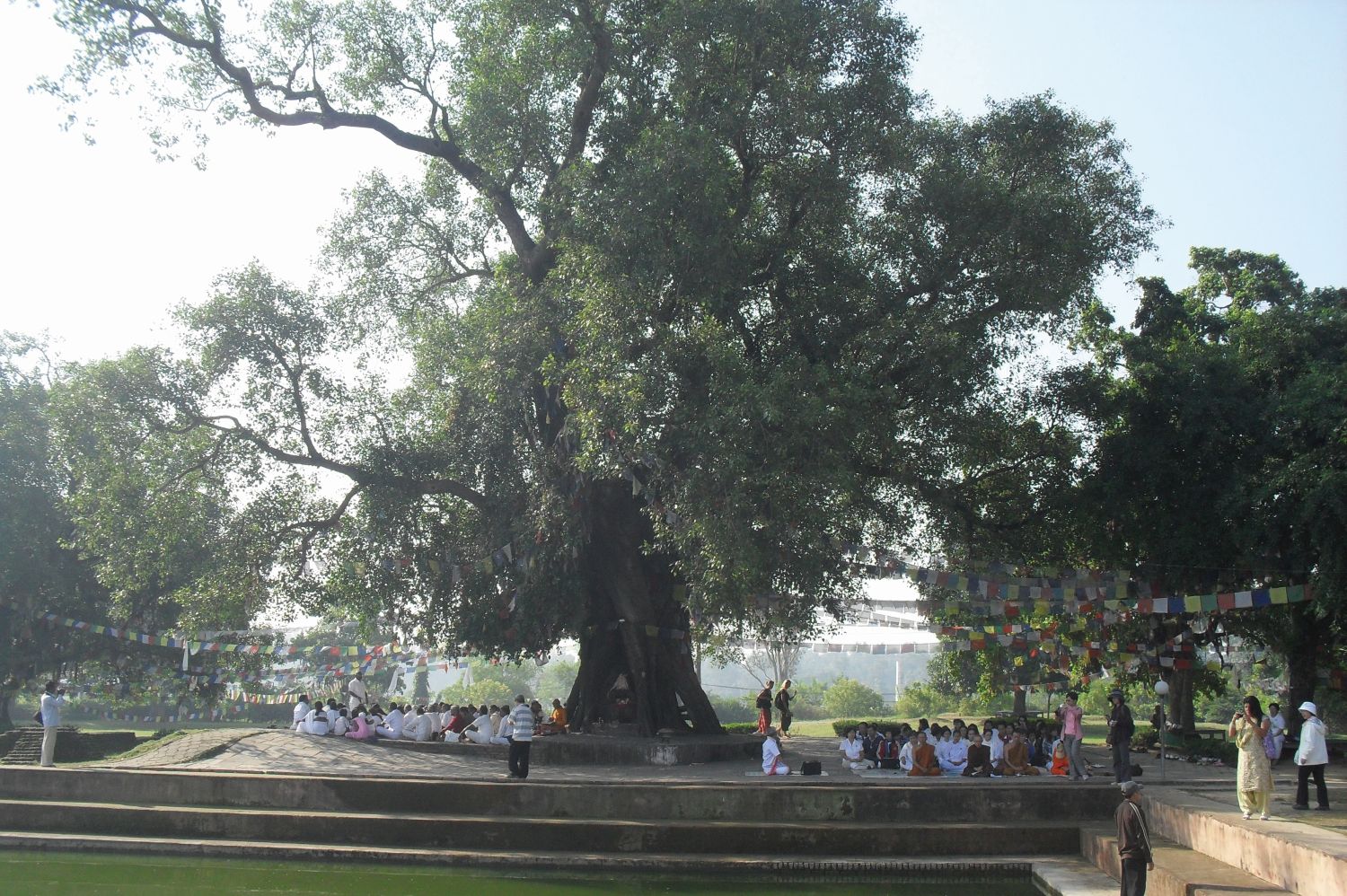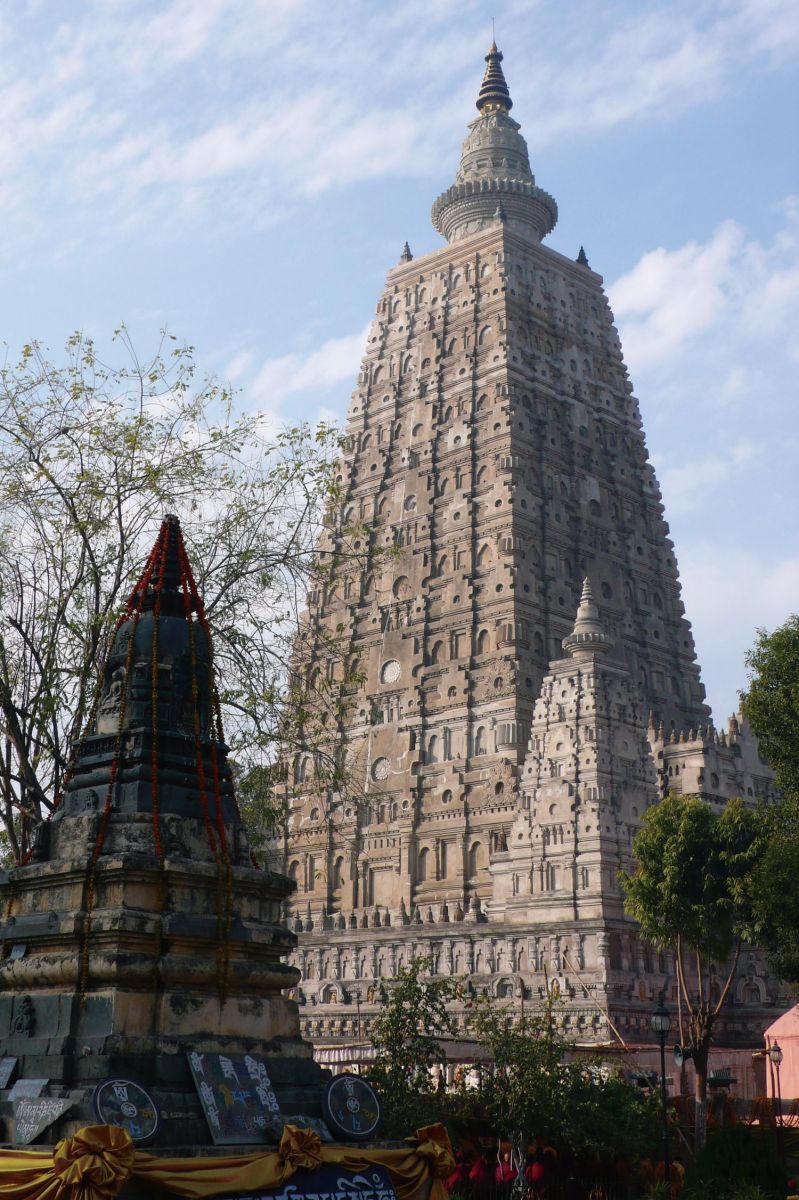Special Topics
Get to Know the Buddhist Holy Lands: Lumbini and Bodhgaya
How many Buddhist sacred places are there in India, Nepal, China, Tibet, Japan, Indonesia and other countries? Let's take a virtual pilgrimage tour and get to know the holy lands of Buddhism.1. Lumbini - The Birthplace of Buddha
 Around 600 B.C., Gautama Buddha was born in Lumbini Garden located on the border of Nepal. Gautama Buddha's father was King Suddhodana and his mother was Queen Maya. Legend has it that Queen Maya became pregnant after she dreamed of a white six-tusked elephant entering her womb at night. When Queen Maya was about to give birth she had to return to her parents' home for labor in accordance with Indian customs of the time. On her way, when Queen Maya walked past Lumbini Garden, she bathed in the pond and took a rest under an Ashoka tree by the pond. When Queen Maya reached out with her right hand for a branch of the ashoka tree, a baby was born from her right side.
Around 600 B.C., Gautama Buddha was born in Lumbini Garden located on the border of Nepal. Gautama Buddha's father was King Suddhodana and his mother was Queen Maya. Legend has it that Queen Maya became pregnant after she dreamed of a white six-tusked elephant entering her womb at night. When Queen Maya was about to give birth she had to return to her parents' home for labor in accordance with Indian customs of the time. On her way, when Queen Maya walked past Lumbini Garden, she bathed in the pond and took a rest under an Ashoka tree by the pond. When Queen Maya reached out with her right hand for a branch of the ashoka tree, a baby was born from her right side. The new-born prince stood on his own feet, walked seven steps in each of the four directions, and pointed one hand upward and the other downward, proclaiming: "Above heaven, under heaven, I alone am worthy of honor." With every step he took, a lotus appeared spontaneously on the ground to hold his feet. At the same time, all flowers bloomed simultaneously while the birds chirped in the garden. Two dragon kings poured warm and cold water down from the sky to bathe him.
As time passes, the Buddha's birthplace has grown desolate. Until the 19th century, a German archaeologist A. Füller found the lower part of Ashoka Pillar with his excavation team. From the inscription on the pillar, the historical importance of Lumbini Garden was confirmed, which promotes Buddhists' interests in taking a pilgrimage tour to the sacred place where the Buddha was born.
Every year in winter and spring--both peak seasons of pilgrimage to Nepal-- pilgrims from all parts of the world will visit this holy site where Prince Siddhartha was born 2500 years ago, to commemorate and show gratitude to him for the infinite wisdom and luminosity he has brought to the world.
2. Attaining Enlightenment in Bodhgaya
 After renouncing secular life and spending six years practicing austerity, Prince Siddhartha received rice milk from the milkmaid Sujata at the bank of Falgu River (Nairanjananadi, in Sanskrit) in Bodhgaya and walked towards a pippala tree to meditate diligently. Under this tree, the Buddha attained the supreme enlightenment (Anuttarā Samyaksaṃbodhi, in Sanskrit), and the tree that witnessed the Buddha's enlightenment is thus called "Bodhi Tree".
After renouncing secular life and spending six years practicing austerity, Prince Siddhartha received rice milk from the milkmaid Sujata at the bank of Falgu River (Nairanjananadi, in Sanskrit) in Bodhgaya and walked towards a pippala tree to meditate diligently. Under this tree, the Buddha attained the supreme enlightenment (Anuttarā Samyaksaṃbodhi, in Sanskrit), and the tree that witnessed the Buddha's enlightenment is thus called "Bodhi Tree". Practitioners from all over the world like to practice around the Vajra Seat under the Bodhi Tree. Tibetan monks diligently performing prostrations, Theravada bhikkhus concentrating on performing walking meditation, and Buddhist masters and lay practitioners of Chinese Buddhism reciting sutras and the Buddha's name can be seen everywhere in Bodhgaya.
The Mahabodhi Temple, a famous temple built by King Ashoka in Bodhgaya, enshrines a life-sized statue of Shakyamuni Buddha at the age of 25. In 2002, the Mahabodhi Temple was declared a UNESO Word Heritage Site. Every year during the full moon nights of April and May, a celebration takes place in Bodhgaya to commemorate the Buddha's enlightenment.
Pilgrimage to Sacred Sites to Recollect the Saints
Pilgrimage: Following the Footsteps of the Awakened Ones - the Origin of the Holy Sites and the Transformation of the Forms of Pilgrimage
Get to Know the Buddhist Holy Lands: Lumbini and Bodhgaya
Get to Know the Buddhist Holy Lands: Sarnath and Kushinagar
Get to Know the Buddhist Holy Lands: Rajgir and Sravasti
Get to Know the Buddhist Holy Lands: Vaishali and Nalanda
Resource: Issue 368 of Life Magazine, Dharma Drum Publishing Corporation
Photos: Issue 368 of Life Magazine, Dharma Drum Publishing Corporation
Translation: Pin-an Chen (陳品安)
Editing: YKL, Keith Brown
